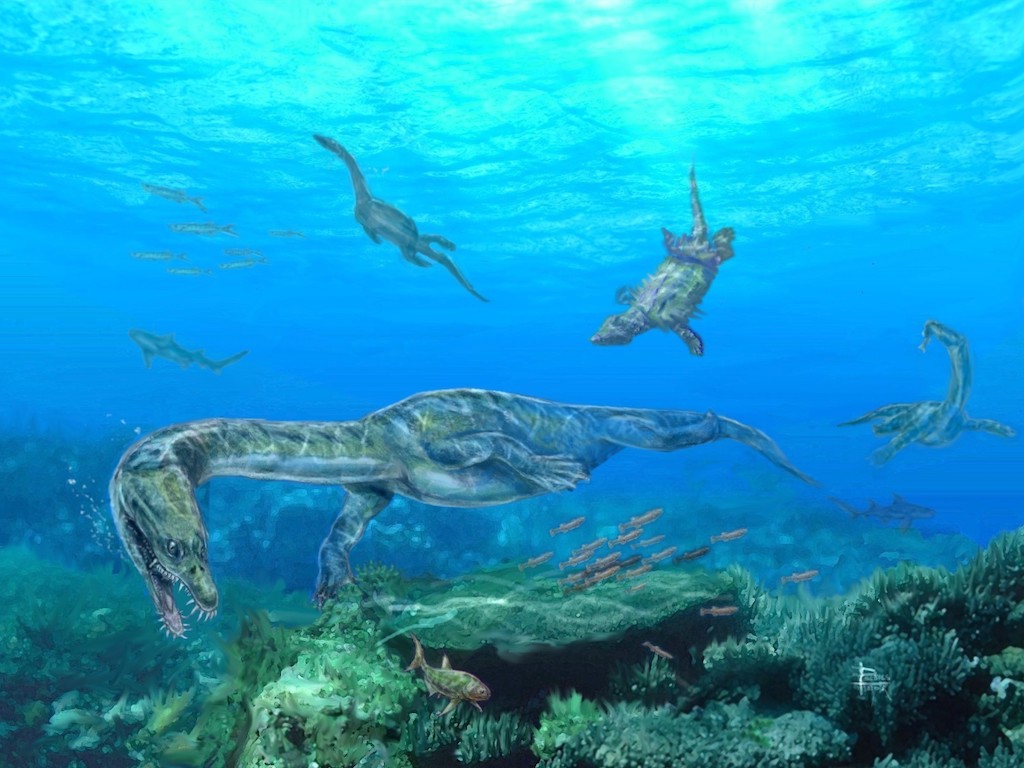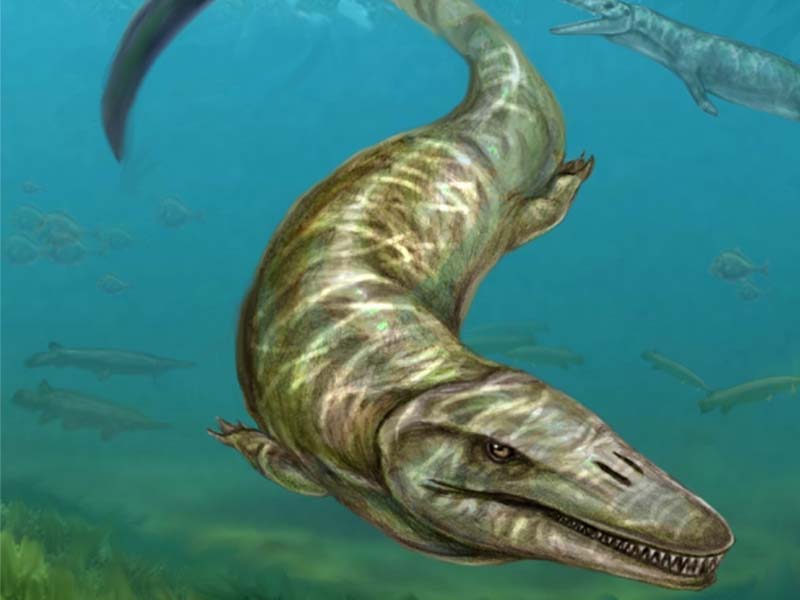
Dortokidae turtles
These turtles are poorly known and only represented by characteristic isolated shell elements. However, they are more common than the remains of Kallokibotion…

85 million years is a great time not only the fauna had time to undergo a complete change from the world of dinosaurs to the recent well known fauna but also the world of plants transformed. It seems to be certain that the animals were resting in the shadow of trees and of course the herbivorous animals were eating the undergrowth plants. But at the fields there was no grass because the appearance of grasses is a really young event moreover the trees were also quite different. The best way to find out what the animals did eat is to study the plant macroremains (mainly leafs). At the locality Iharkút leaves are known from two layers. From these one is no more examinable because it was needed to be covered for mine security reasons, however the members of the expedition had the chance to collect remains from there and professor Lilla Hably had studied these leaves. Based on her studies more branches can be associated to araucaria. The recent relatives of these gymnosperms are known as monkey puzzle or Chile pine. More detailed studies were carried out on the pollen grains by Viktória Baranyi ( Figure 1) and on the seeds and fruits by Emese Réka Bodor. Based on these studies a special riverbank-floodplain forest can be reconstructed which was dominated by a beech-tree related extinct plant group.
The beauteous tree of Hungarian parks is the tulip tree. With this plant more hundreds of the seeds from Iharkút can be realated based on the studies of Emese Réka Bodor and Professor Else Marie Friis ( Figure 2). During the investigations it turned out that some of the fossils are that perfectly preserved what made possible to make cellular studies on them. These cellular examinations also proved the relation to the tulip trees.
The locality Iharkút might be a part of an island where special plants had the possibility to develop. For instance the most common fruit is an approximately 1 mm in diameter rounded, ribbed fossil (Figure 3). These kind of fossils are new for the science and from this locality more thousands of these are known. The extinct plant group called Normapolles become richer with one species owe to the excavations at Iharkút.
The recent representatives of Sabiaceae are liana, trees and shrubs in Southern Asia and in the tropical-subtropical regions of America. At Iharkút was found the Sabia menispermoides Cretaceous species of the Central-East-European region (Figure 4).
The recent representatives of Sabiaceae are liana, trees and shrubs in Southern Asia and in the tropical-subtropical regions of America. At Iharkút was found the Sabia menispermoides Cretaceous species of the Central-East-European region (Figure 4).

These turtles are poorly known and only represented by characteristic isolated shell elements. However, they are more common than the remains of Kallokibotion…

The rock layers of the Middle Triassic Templomhegy Dolomite Member on Somssich Hill (Villány) – which were deposited in a shallow marine environment…

Gars (Lepisosteidae) are an extant family of actinopterygian fishes, living exclusively on the western hemisphere…

Mosasaurs were reptiles belonging to the living group of scaled reptiles (squamates), going extinct at the end of the Cretaceous…